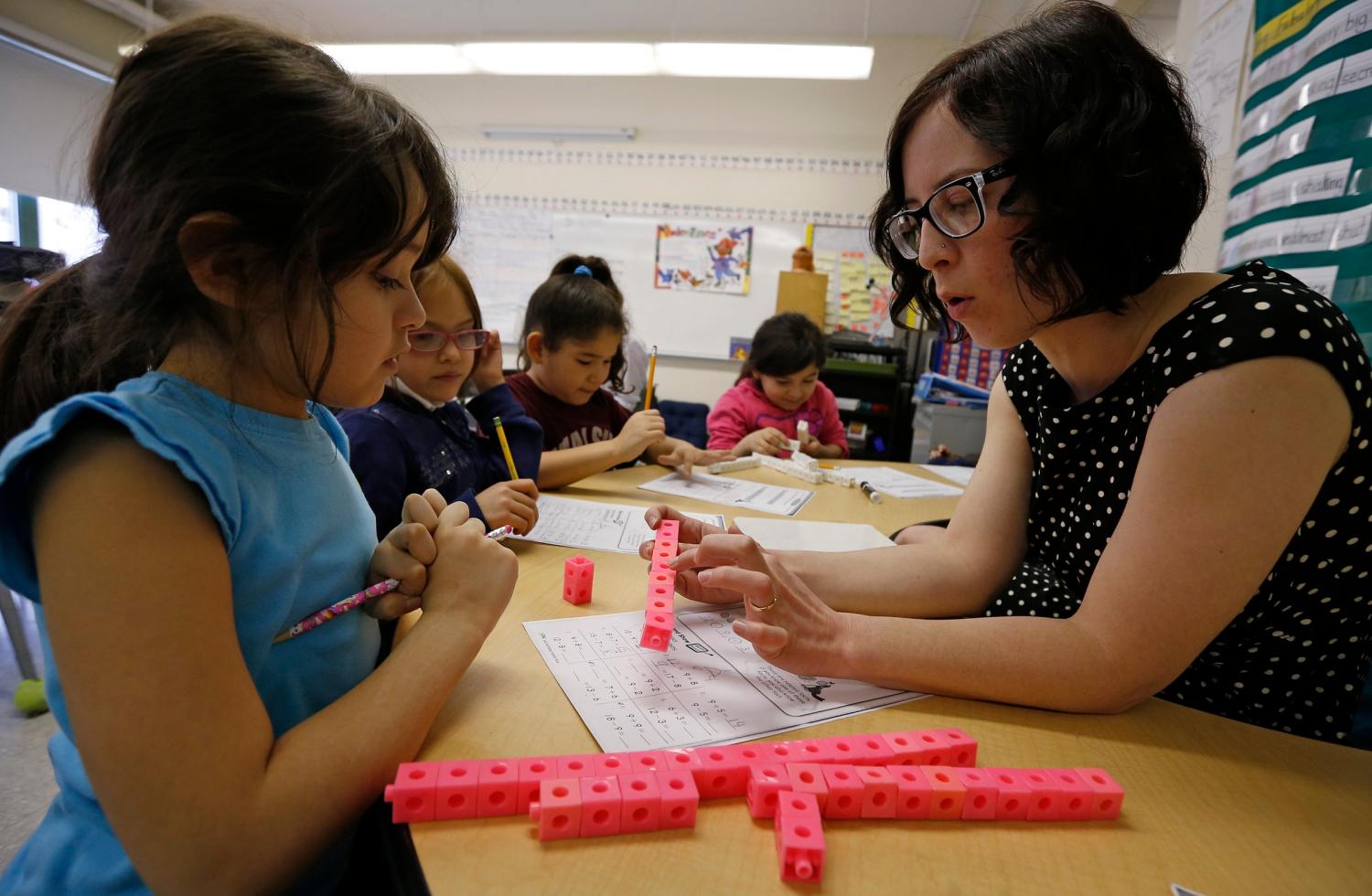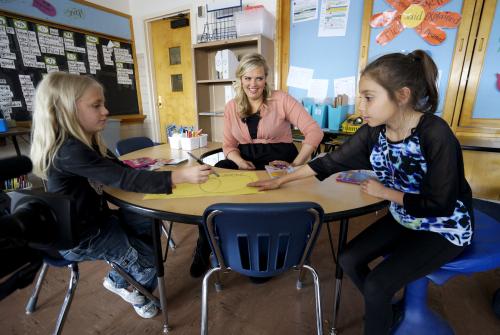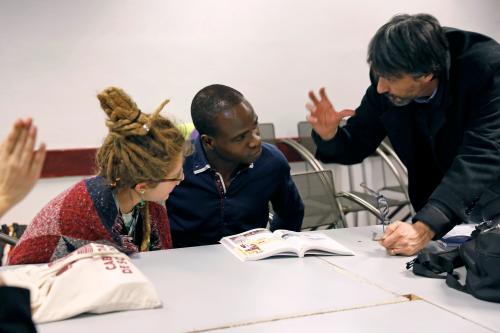You might not think of teachers as players in our growing “gig economy.” After all, a teaching job seems like the ultimate form of guaranteed employment. Turns out, a significant number of teachers do work second jobs. In fact, teachers are more likely than others to work a second job. It’s a summer thing, right? Apparently not, but we’ll get to that below.
We know a fair amount about the extent to which teachers take second jobs. We know less about why they take jobs and not too much at all about the consequences of second jobs. A teacher with a second job raises their income, of course. Does outside work distract from teaching, or does it enrich what the teacher brings to class? Is a second job a path to leaving teaching altogether, or does a second job bring in enough extra income to allow an underpaid teacher to keep teaching as their main gig? The data shared here establishes that second jobs for teachers are an issue that deserves more attention. For some of the “whys” and “consequences,” it would be awfully interesting to hear from teachers.
To begin, how do we know who works a second job? The Bureau of Labor Statistics (BLS) conducts a year-round survey, called the American Time Use Survey, in which it asks individuals how they have spent their time both on the day of the survey and in the very recent past. In addition to asking about a person’s main occupation, the BLS asks if they worked another job in the last seven days. Our sample is made up of individuals with a college education who report being employed full-time from 2003 through 2016, giving us just over 36,000 observations.
Overall, teachers (defined as elementary and secondary teachers, excluding special ed) are about 30 percent more likely than non-teachers to work a second job based on survey responses. That comes down to about 11 percent of non-teachers and 14 percent of teachers. This figure changes when the type of teacher is considered, though. The chart below shows that elementary school teachers are only a little more likely than non-teachers to have a side job. The difference is quite a bit more for secondary school teachers.
Among non-teachers, women and men are equally likely to hold down a second job. The situation among teachers is quite different. While female teachers are slightly more likely than female non-teachers to have a second job, male teachers are much more likely to have a second job than are their non-teaching counterparts. In fact, nearly one male teacher in five reports working a second job.
What time of year would you expect to find that teachers are most likely to hold second jobs? Like me, you may have guessed summer, but it turns out that’s not what the data says. First, teachers are more likely than non-teachers to have a second job all year, except in the October and November run-up to the holiday season. For teachers, the big months for second jobs are January and February. I would have thought that teachers are more likely to pick up outside work when school is not in session. But you can see from the chart that that’s not what’s going on.[1]
It would be nice to get a handle on what kind of work is involved in a second job. If a teacher is coaching football on the side while a second job for non-teachers is driving for Uber, we might feel differently than if both were driving as a second gig. While the BLS asks about the nature of second jobs, hardly anyone answers that question. (For a fun recounting of an interesting but unusual outside job, see this New York Times article.) Fortunately, the Schools and Staffing Survey (SASS; I’m using the 2011-12 results) does gather some information about the nature of second jobs. The survey is only given to teachers, so we can’t compare second-job types for teachers versus non-teachers, but we can tease out a little more about what teachers do.
First thing, SASS data confirm the fraction of teachers holding second jobs. In fact, it’s a tad higher than the BLS number, with 17 percent holding a second job outside their school system. Of those second jobs held by teachers, about half are not related to teaching. Of the jobs that are related to teaching (but remember, not for their own school system), about two-thirds are either teaching or tutoring, while the other third are “related,” but not teaching. So, no, the side jobs do not appear to be mostly coaching positions. Notably, female teachers with second jobs are relatively likely to have second jobs related to teaching. For men, it’s the other way around, where second jobs not related to teaching are more common.
The SASS data also raises the possibility that part of the reason teachers are more likely to take second gigs is that they can find positions doing extra teaching—or at least something related to teaching—relatively easily.
So teachers are more likely than non-teachers to hold a second job. It’s particularly secondary school teachers and male teachers who have second jobs. Why are teachers more likely to take a second job? I suspect part of the difference is due to the fact that teachers are paid less, so they have greater incentive to increase their income. But I did a quick statistical analysis which suggests that earnings differentials only explain something over a third of the difference between the two groups. That means there is something more than pay differentials that matter. (For the record, according to the sample data teachers and non-teachers work the same number of weekly hours at their main job.) This leads to intriguing questions: Why do more teachers choose second jobs? Is it the pay differentials? Or might it be that teachers have easier access to second jobs because teachers and tutors are in demand?
And perhaps most importantly, does having a second job make someone a better teacher, or does it just make them a more tired teacher?
Note: UCSB undergraduate and Gretler Fellow Isabel Steffens provided research assistance for this post.
Footnote
- I do want to raise one caution about interpreting the apparent summer drop in second jobs among teachers. Respondents are asked whether they had multiple jobs in the last week. It’s possible that, in July, teachers who have a non-teaching job might answer “no,” because they aren’t in the classroom during July. There’s no way to tell for sure how much of this might be going on. Since a drop in summer jobs is what the data says, that’s our best guess, but do keep in mind the caveat.
The Brookings Institution is committed to quality, independence, and impact.
We are supported by a diverse array of funders. In line with our values and policies, each Brookings publication represents the sole views of its author(s).








